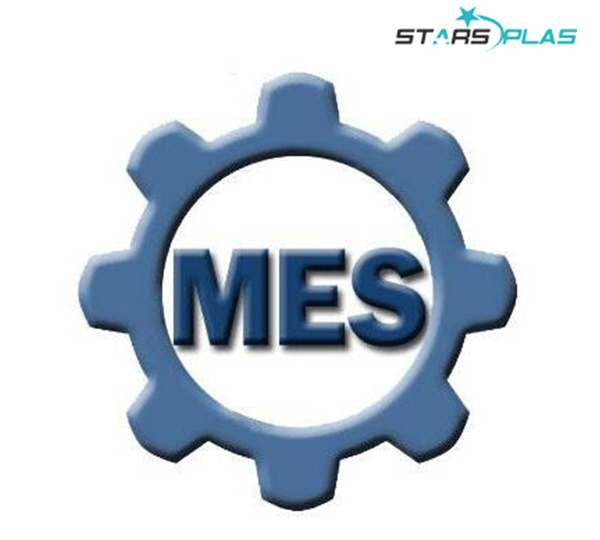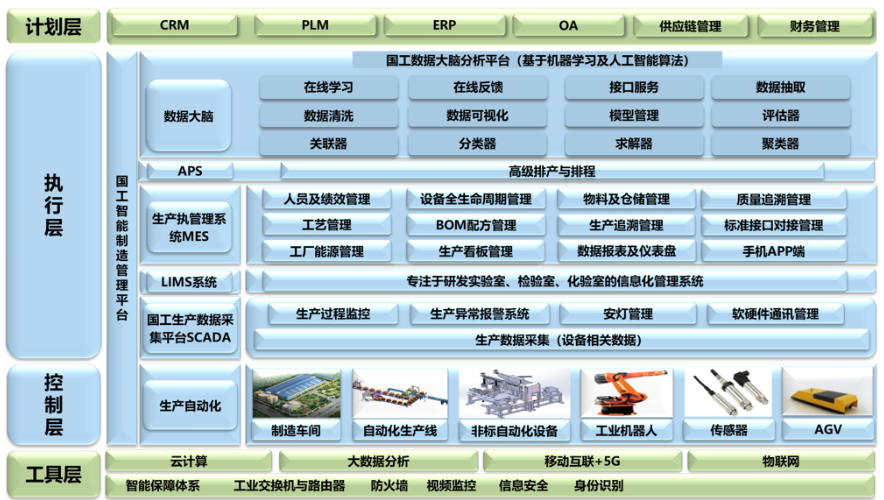Global Solutions
MES Control System

1.Overview
MES control system is an information management system aimed at the production execution level of manufacturing enterprises. Provide enterprises with production planning and scheduling, production process, quality, equipment and other comprehensive management, assist enterprises to achieve production data collection, production process monitoring, production process quality inspection and product quality inspection, equipment management functions, to achieve production data transparency and improve production efficiency, save production costs.
2. System diagram

3. Function
(1) BOM management
MES system effectively manages BOM and product configuration in the whole product life cycle, and maintains and controls the establishment, circulation and change of BOM. Obtain the correct BOM information by providing a single source of structured product and process information.
(2) Process management
MES system software provides PLM-based process data and process management to realize integrated management of product design and process design.
Establish the enterprise process template library, build the enterprise process knowledge base, improve the standardization level of the process, accumulate the enterprise process knowledge, and prevent the loss of experience.
(3) Production orders
Based on the order planning mode, record the required quantity, demand time and other information. MES combines product BOM and product basic information module, decomposes the plan to specific positions to achieve efficient combination of production and sales, promotes production efficiency, and pulls/promotes production.
(4) Production work order
The production work order is the sop of the production operator, which is combined with the production plan on the basis of the product batch record information, and contains specific feeding information, equipment information, and production operation information. In addition, the production work order contains the operation records, abnormal records, equipment parameters, deviation processing, packaging quantity and other information of the product in the entire production process.
4. Application
(1) Production plan:
MES system interconnects with ERP system through interface to read sales order information, record product information, demand quantity, demand time and other information. The production plan is formed into a work order according to the process requirements of the product model, and the execution of the work order is associated with the production plan, so that the production data can be traced and the production plan can be modified according to the execution of the work order.
(2) Product model:
The process management of MES system is composed of three parts: production process, BOM, process route and the relationship between them. The process management organically combines the production factors such as materials, personnel, equipment, processes, quality inspection and so on, describes the production process in detail, and can guide production scheduling, pre-production material division, and the formation of production work orders.
(3) Process traceability:
The MES system automatically records the production plan number for each link in the business process. When the relevant data needs to be traced, the entire production process can be tracked through the production plan number, including batch, process, equipment use, products in process, quality inspection and other information.
(4) Quality management:
The work order and warehouse entry order that need to be inspected in the MES system can generate quality inspection commission, associate quality inspection data with the work order, and establish quality inspection files after unified summary of quality data, which can carry out quality analysis according to factors such as products and processes, or trace quality data.
(5) Performance management
MES system records batches, equipment usage, production indicators and other data in real time through manual input and data collection in the production process and associates it with the work order at the same time, supplemented by functions such as pre-production material division, feeding error prevention, work order replication and overtime reminder, effectively reducing work errors and improving work efficiency.
(6) Production scheduling:
MES system through the product model, production orders and production capacity information will form the production process work order, dispatcher can specify the production workshop, modify the required completion time, workshop management can specify personnel, equipment, etc., and can adjust the production work order according to the actual situation of production.
(7) Analysis of financial statements:
The MES system can customize the report in the customary format through the report system to analyze the production process according to different dimensions, and can also put real-time data in the production process directly on the large screen through the cockpit, so that managers can grasp the production situation in real time.
5. Benefit analysis
(1) Production transparency
The MES platform links the production-related data in the enterprise together, making the process, production process, personnel, and in process
Products, equipment, quality, etc. are combined with all aspects of production as a whole, to achieve transparent supervision and management of production.
(2)Lean production
MES system can carry out information, automation and intelligent management for workshop, art, materials, production capacity, etc
The development of production plan and the satisfaction of production needs provide objective, reasonable and accurate advantages to help enterprises achieve lean production.
(3) The production process can be traced
MES system will close the information flow of the whole process from production plan to production work order to production execution and product storage
The related data can be collected according to the production order, and the production process can be traced.
(4) Improve the level of production management capabilities
The MES system allows production managers and enterprise managers to grasp the situation and needs of the workshop production site at the first time, so they can react quickly, correct and solve the problems in time, and improve the level of production management.
(5) Effectively control production costs
In the process of MES system, the standard materials used in each process stipulated by BOM, the standard time, the traceability, the workshop manager can control the materials and labor used in the production execution process according to the standard, or the report for data analysis, and improve the production efficiency.
6. Advantages
(1) Applicable to multiple architectures
The system also has C/S, B/S, mobile terminal three architectures.
(2) Cross-platform deployment
Products based on JAVA technology development, cross-platform deployment, support a variety of mainstream operating systems for service deployment.
(3) Simple maintenance
The operation of the system function module and the operation and maintenance of the background management terminal are convenient and easy to use.
(4) Compatible with a variety of mainstream databases
It adopts centralized database structure, centralized information, compatible with MySQL, SQL Server, Oracle and other mainstream databases.
(5) Custom construction
With no code development module, support for rapid custom building modules, expansion functions.
(6) User-defined rules
The system can customize the bar code/two-dimensional code generation rules and generate the corresponding bar code and two-dimensional code according to the rules, and can also communicate with the RFID device.
(7) Artificial Intelligence
MES system integrates artificial intelligence technology, makes data utilization more efficient, and provides the possibility for enterprises to realize judgment and optimization quickly and clearly, so as to truly improve the quality and efficiency of enterprises.
(8) Rich data interface
MES system has efficient data interface with mainstream ERP, LIMS, EAS and other systems to achieve inter-system linkage.
7. The use of MES system before and after comparison
(1) Before using MES
1. After the work order is completed, the technical personnel will make statistics on the production raw materials, batch numbers, working hours, etc.
2. Manual review.
3. Fixed location designated computer can be checked.
4. Leakage detection.
5. Fill in the paper version of the documents for signature.
6. Paper shift records.
7. Send the sample by hand, and receive the test by computer.
8. Issue paper versions.
(2) After using MES
1. All data visualization.
2. It saves time and labor cost of manual calculation and statistics, and can ensure accuracy.
3. Equipment error prevention, feeding error prevention and other functions to save costs and improve work efficiency.
4. Real-time query of equipment and instrument data.
5. Omission detection pop-up window reminder.
6. Deviation processing and problem feedback form, so that abnormal situations are transmitted and dealt with in time.
7. The production progress is updated in real time and can be tracked at any time.
8. Establish data detection contact with the analysis center, and the information transfer and result reception are convenient and fast.
9. The operation procedures are divided into two parts and viewed on the APP according to the process steps, which can ensure that the files are not lost and effectively improve the confidentiality of the process.

